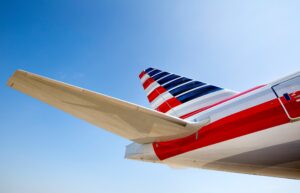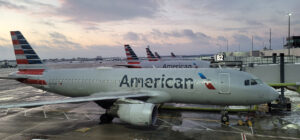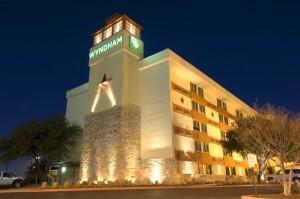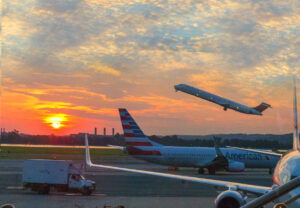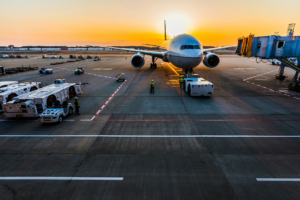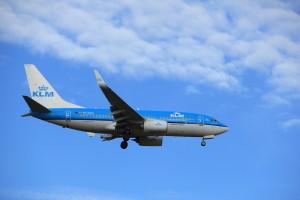The daily pattern of aircraft / pax flows at EWR?
#16
Join Date: Sep 2001
Location: Austin, tx, USA
Programs: UA 1K, Hertz 5-star, Marriott Gold
Posts: 261
#19
Join Date: Jul 2001
Location: YYC
Programs: AC Basic, UA MP Gold, Marriott Gold Elite, SPG Gold, Amex Platinum
Posts: 3,011
C3 can concurrently handle maybe 9 widebody flights plus 2-3 narrowbody flights. Some of the widebody flights will block use of adjacent gates. Only using C3 for widebody international arrivals and departures would be suboptimal because of the gate blocking.
UA gates all departures at terminal C for optimal hub operations. The international widebodies at C2 help to spread pax around the three concourses.
What UA should be doing is renovating C2 to allow for international widebody arrivals processing. Alternately and probably preferable for pax, UA and PANYNJ should look at bussing operation similar to FRA, unload via air stairs and have the bus take pax directly to customs.
Yes it's is another reason why UA arrivals are gated at B, USCBP staffing levels and available facilities. It would not surprise me to learn that for staffing purposes, USCBP treat terminals C and B as completely separate facilities, therefore Officers do not commingle between the terminals and there are no split shifts (e.g. 4 hours at B followed by 4 hours at C). This is how operations are conducted at YYZ with both US CBP and CBSA ( Canandian counterpart).
UA gates all departures at terminal C for optimal hub operations. The international widebodies at C2 help to spread pax around the three concourses.
What UA should be doing is renovating C2 to allow for international widebody arrivals processing. Alternately and probably preferable for pax, UA and PANYNJ should look at bussing operation similar to FRA, unload via air stairs and have the bus take pax directly to customs.
Yes it's is another reason why UA arrivals are gated at B, USCBP staffing levels and available facilities. It would not surprise me to learn that for staffing purposes, USCBP treat terminals C and B as completely separate facilities, therefore Officers do not commingle between the terminals and there are no split shifts (e.g. 4 hours at B followed by 4 hours at C). This is how operations are conducted at YYZ with both US CBP and CBSA ( Canandian counterpart).
#20

Join Date: Aug 2009
Location: EWR, BDL
Posts: 4,473
C3 can concurrently handle maybe 9 widebody flights plus 2-3 narrowbody flights. Some of the widebody flights will block use of adjacent gates. Only using C3 for widebody international arrivals and departures would be suboptimal because of the gate blocking.
UA gates all departures at terminal C for optimal hub operations. The international widebodies at C2 help to spread pax around the three concourses.
What UA should be doing is renovating C2 to allow for international widebody arrivals processing. Alternately and probably preferable for pax, UA and PANYNJ should look at bussing operation similar to FRA, unload via air stairs and have the bus take pax directly to customs.
Yes it's is another reason why UA arrivals are gated at B, USCBP staffing levels and available facilities. It would not surprise me to learn that for staffing purposes, USCBP treat terminals C and B as completely separate facilities, therefore Officers do not commingle between the terminals and there are no split shifts (e.g. 4 hours at B followed by 4 hours at C). This is how operations are conducted at YYZ with both US CBP and CBSA ( Canandian counterpart).
UA gates all departures at terminal C for optimal hub operations. The international widebodies at C2 help to spread pax around the three concourses.
What UA should be doing is renovating C2 to allow for international widebody arrivals processing. Alternately and probably preferable for pax, UA and PANYNJ should look at bussing operation similar to FRA, unload via air stairs and have the bus take pax directly to customs.
Yes it's is another reason why UA arrivals are gated at B, USCBP staffing levels and available facilities. It would not surprise me to learn that for staffing purposes, USCBP treat terminals C and B as completely separate facilities, therefore Officers do not commingle between the terminals and there are no split shifts (e.g. 4 hours at B followed by 4 hours at C). This is how operations are conducted at YYZ with both US CBP and CBSA ( Canandian counterpart).
Last edited by JOSECONLSCREW28; Aug 8, 2015 at 12:21 pm
#22


Join Date: Jan 2002
Location: Federal Way, WA
Programs: Many, but completely free agent now
Posts: 1,338
Gate scheduling is as much a matter of operations research as is flight scheduling, just with different rules to take into account. Flight scheduling has to worry about average winds, taxi times (in and out), flight crew contracts and government regulations, curfews, connecting schedules, and so on. Gate scheduling has to worry about suitability (for example, whether there is access to Customs for an inbound international flight -- I'm not talking about just EWR here), ability to handle the aircraft type, effect on neighboring, gates, and so on (some of these were mentioned by others).
There actually is a plan for every single day of the week. It usually is out of date by the end of the first 2 hours. Plane types change, flights are either late or early, flights are canceled or delayed (one maxim of was is that "no plan survives contact with the enemy" and in this case the enemy is real life).
Since UA seems to change its schedule every 3 days I can't give a good explanation of the banking at EWR, but if I had the time (I don't right now and won't for at least a week) I could take the PDF version and analyze it, after selecting a very short, specific time period.
When I was first studying airline scheduling, back in the 70s, UA did indeed set their banks at ORD for certain destinations. This was in the days before Deregulation, but the earlier Regulated era didn't have much effect on specific times for flights. Westbound banks were set for the west coast (1000-1030, 1300-1330, 1530-1600, 1800-1830, and 2130-2200 are approximations), for the east coast (0600-0630, 0800-0830, 1100-1130, 1400-1430, 1700-1730, and 2000-2030, more or less). Some of these also had the "corn" banks (OMA, LNK, DSM, CID, MLI, MSP) and the Michigan/Ohio banks (MKG, GRR, LAN, MBS, FNT, TOL, CAK, YNG, CMH, DAY). Of course, flights to LGA and DCA were hourly without regard to designated banks. Since ORD was central to the system, banks at other hubs (which in those days meant DEN and SFO) were based on ORD schedules first and foremost.
One thing I can say about current scheduling practices -- and I'm again being generic and not talking only about EWR -- is that international arrivals are usually spread out over a longer period. This is not only because of Customs congestion but also because the longer a flight is, the greater the chance of being very late or very early. Scheduling is still as much an art as it is a science, so a lot of tweaks go into the process and a lot of "what ifs" are considered.
There actually is a plan for every single day of the week. It usually is out of date by the end of the first 2 hours. Plane types change, flights are either late or early, flights are canceled or delayed (one maxim of was is that "no plan survives contact with the enemy" and in this case the enemy is real life).
Since UA seems to change its schedule every 3 days I can't give a good explanation of the banking at EWR, but if I had the time (I don't right now and won't for at least a week) I could take the PDF version and analyze it, after selecting a very short, specific time period.
When I was first studying airline scheduling, back in the 70s, UA did indeed set their banks at ORD for certain destinations. This was in the days before Deregulation, but the earlier Regulated era didn't have much effect on specific times for flights. Westbound banks were set for the west coast (1000-1030, 1300-1330, 1530-1600, 1800-1830, and 2130-2200 are approximations), for the east coast (0600-0630, 0800-0830, 1100-1130, 1400-1430, 1700-1730, and 2000-2030, more or less). Some of these also had the "corn" banks (OMA, LNK, DSM, CID, MLI, MSP) and the Michigan/Ohio banks (MKG, GRR, LAN, MBS, FNT, TOL, CAK, YNG, CMH, DAY). Of course, flights to LGA and DCA were hourly without regard to designated banks. Since ORD was central to the system, banks at other hubs (which in those days meant DEN and SFO) were based on ORD schedules first and foremost.
One thing I can say about current scheduling practices -- and I'm again being generic and not talking only about EWR -- is that international arrivals are usually spread out over a longer period. This is not only because of Customs congestion but also because the longer a flight is, the greater the chance of being very late or very early. Scheduling is still as much an art as it is a science, so a lot of tweaks go into the process and a lot of "what ifs" are considered.
#23
Join Date: Apr 2009
Posts: 84
One problem is too many domestic arrivals/departures using the C3 concourse when they could actually be using the C1 & C2 concourses. Not a scientific study by any means but I checked the departures/arrivals for C137 in the C3 concourse and none of the flights that day using that gate were arriving/departing to an international destination. Last week an EWR - LAX flight on the 75B used an aircraft that arrived from MCO at gate C80 but was towed a few hours later to C3 to depart from C134. Meanwhile one of the TATL flights HAM if I remember correctly used C80 ridiculous if you ask me.


